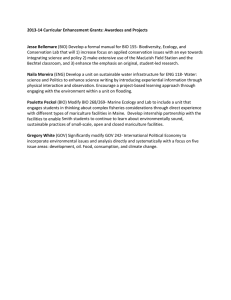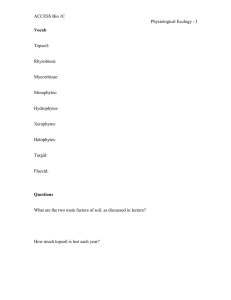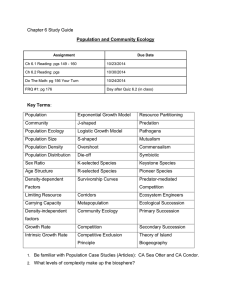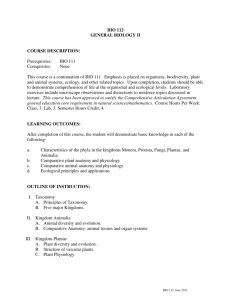Access Ecology 2
advertisement
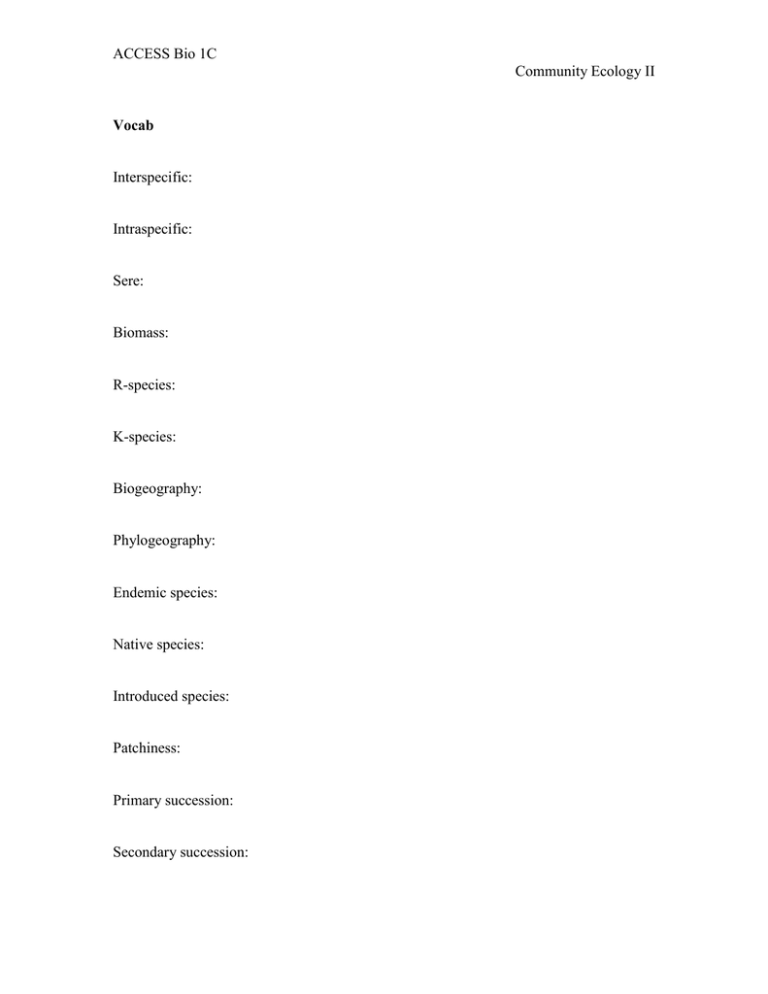
ACCESS Bio 1C Community Ecology II Vocab Interspecific: Intraspecific: Sere: Biomass: R-species: K-species: Biogeography: Phylogeography: Endemic species: Native species: Introduced species: Patchiness: Primary succession: Secondary succession: ACCESS Bio 1C Community Ecology II Questions Explain the concepts of bottom-up forcing & top-down forcing & include examples of each. What is the difference between a periodic and a catastrophic disturbance? What affect does each have on an ecosystem? Explain each of the following models: Non-equilibrium model: Dynamic equilibrium model: Intermediate disturbance hypothesis: ACCESS Bio 1C Community Ecology II Facilitation model: Inhibition model: What are some characteristics of a mature community? Explain the succession involved with red mangroves -> black mangroves -> white mangroves. ACCESS Bio 1C Community Ecology II What percent of energy gets transferred up each level of the trophic pyramid? What are some ways that ecologists explain the ranges or distributions of species? Explain the hypothesis of island biogeography? Should there be a larger number of species on an island near the mainland or an island further away? How is it that you can have an inverted trophic pyramid? ACCESS Bio 1C Community Ecology II What is the green world hypothesis? Explain the concepts of gross productivity, net productivity, primary productivity, & net community productivity. If two species occupy the same niche, what are the two possible outcomes? What are the four major types of species interactions? Explain the concept that, “The diversity of a community depends not only on species richness, but also on evenness”. ACCESS Bio 1C Community Ecology II What happens to the diversity of a community when a keystone predator is removed? How is it that a keystone predator can increase diversity?
